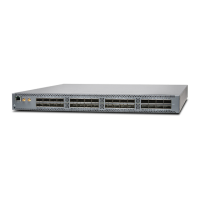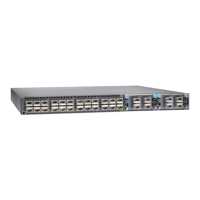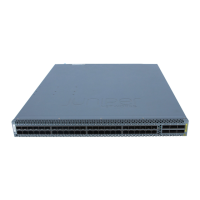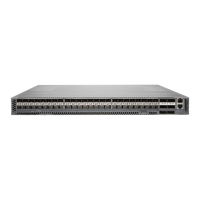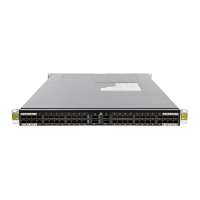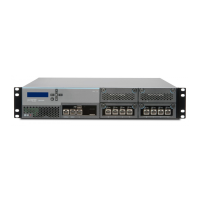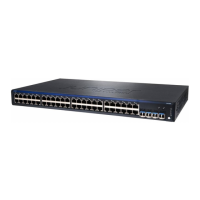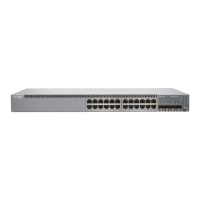Figure 21: QFX3600 Chassis Front
4—1— C0S 1-Gbps SFP management portLCD panel
5—2— C0 1000BASE-T RJ-45 management portQSFP+ ports
6—3— C1 1000BASE-T RJ-45 management portC1S 1-Gbps SFP management port
Figure 22: QFX3600 Chassis Rear
2—1— Fan traysPower supplies
The front panel of the QFX3600 chassis has an LCD panel that displays the device hostname and the
number of active alarms. It also has sixteen 40-Gbps ports labeled Q0 through Q15 that support quad
small form-factor pluggable plus (QSFP+) transceivers. See “Front Panel of a QFX3600 Device” on page 48.
If you are using the QFX3600 device as a Node device in a QFabric system, by default, four ports (labeled
Q0 through C3) are configured for uplink connections between your QFX3600 Node device and your
Interconnect device, and twelve ports (labeled Q4 through Q15) support 48 10-Gigabit Ethernet or 12
40-Gigabit Ethernet interfaces for connections to either endpoint systems (such as servers and storage
devices) or external networks. Optionally, you can choose to configure the first eight ports (labeled Q0
through Q7) for uplink connections between your QFX3600 Node device and your Interconnect device
and ports Q2 through Q15 for 10-Gigabit Ethernet or 40-Gigabit Ethernet connections to either endpoint
systems or external networks. See Configuring the Port Type on QFX3600 Node Devices and “Determining
Interface Support for the QFX3600 Device” on page 140.
If you are using the QFX3600 device as a standalone switch, by default, all 16 QSFP+ ports (Q0 through
Q15) are configured as 40-Gigabit Ethernet (xle) ports. Optionally, you can choose to configure each port
to operate as 10-Gigabit Ethernet (xe) ports. Port 00 is unique because the number of ports you can specify
as 10-Gigabit Ethernet varies by Junos OS release. In some Junos OS releases, port 00 has a reserved port
47
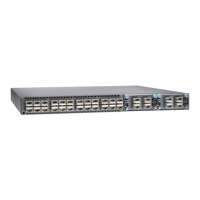
